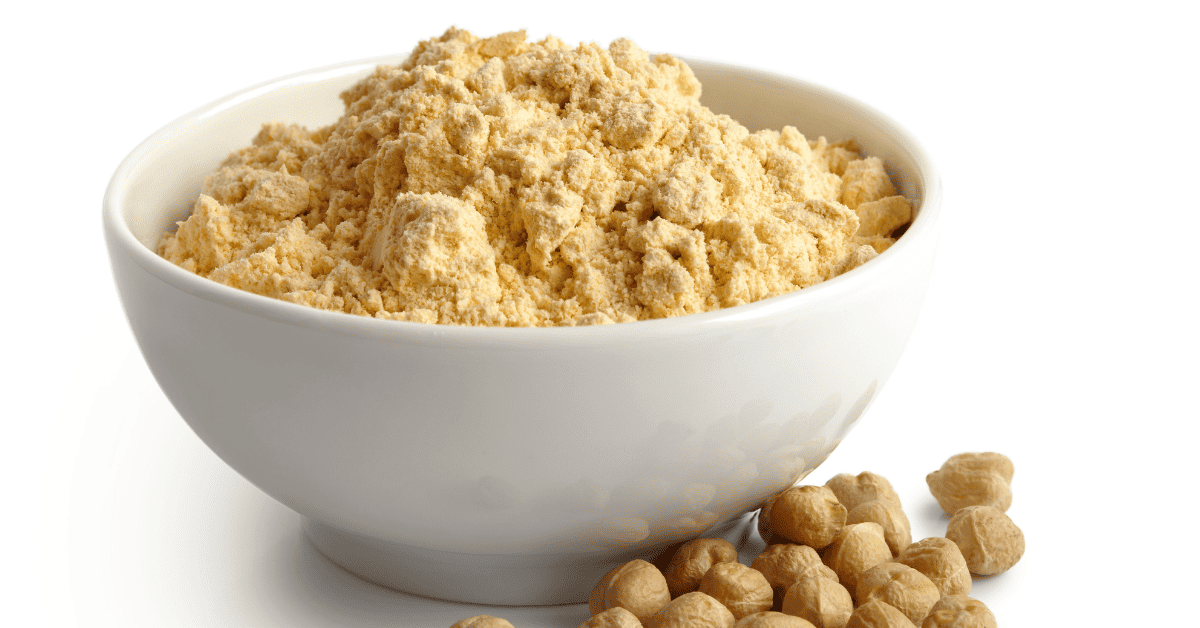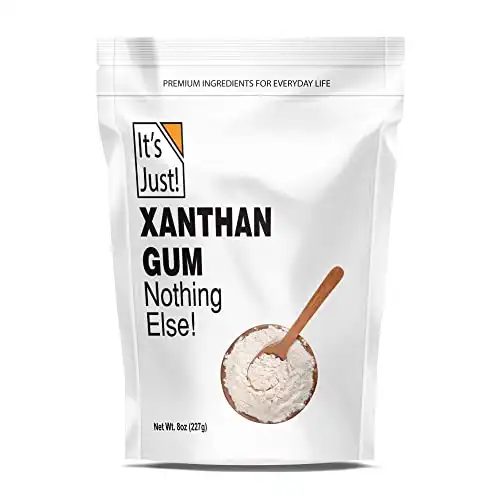Last Updated on November 7, 2023 by Toya
Are you in a pinch and in need of a substitute for cornstarch? If you are, this article has 23 effective alternatives to cornstarch that can help you thicken your recipes without compromising on taste or texture. These swaps are also perfect if you need cornstarch substitutes for frying, baking and more!
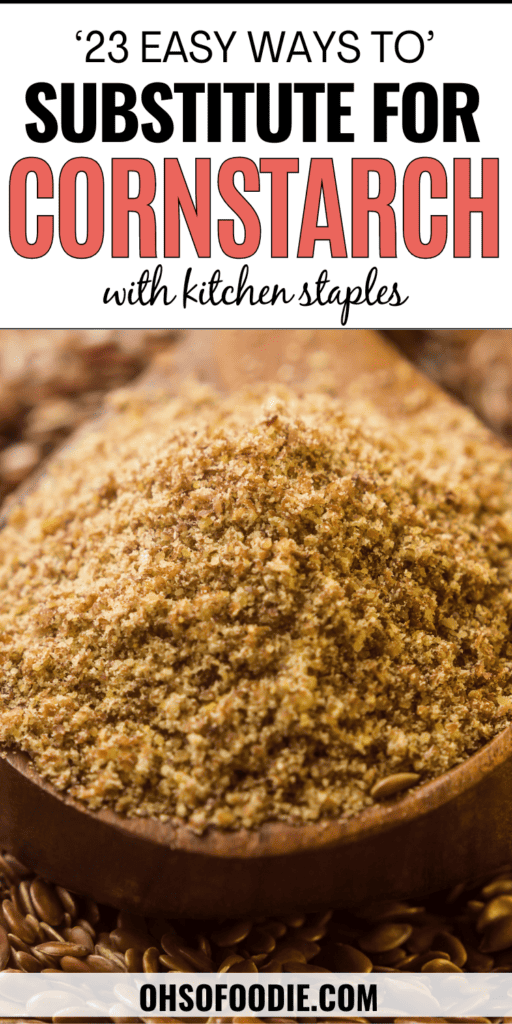
From flour-based substitutes such as all-purpose flour, wheat flour, and rice flour to natural alternatives such as vegetable purees and mashed potatoes, I’ve got something here for you. I will also discuss some unique substitutes such as xanthan gum, arrowroot starch, and ground flaxseed.
So, if you find yourself without cornstarch and need a quick fix, these substitutes will serve as excellent replacements for cornstarch in all your favorite recipes.
What is Cornstarch?
Cornstarch is a fine, powdery substance that is derived from the endosperm of corn kernels. It is commonly used in cooking and baking as a thickening agent due to its ability to absorb liquid and create a smoother texture in dishes.
Cornstarch is gluten-free and has a neutral taste, making it a popular choice among many cooks and bakers.
One of the unique properties of cornstarch is its ability to thicken liquids at lower temperatures compared to flour-based thickeners, making it ideal for delicate sauces and custards.
Overall, cornstarch is a versatile ingredient that has a range of applications in cooking, but you may not always have it. Here are the substitutes you can use instead.
Flour-based Substitutes
When it comes to thickening agents, various types of flour can be excellent substitutes for cornstarch. All-purpose flour, wheat flour, and even rice flour can be used to achieve a similar thickening effect in your dishes. Here are a few examples:
All-Purpose Flour
All-purpose flour can be used as a great substitute for cornstarch. All-purpose flour creates a slightly opaque and smooth texture when used in thickening. It is best to use all-purpose flour in savory dishes like stews and sauces.
However, you can also use all-purpose flour to replace cornstarch in frying and baking.
For every tablespoon of cornstarch required, you’ll need to substitute two tablespoons of all-purpose flour.
Wheat Flour
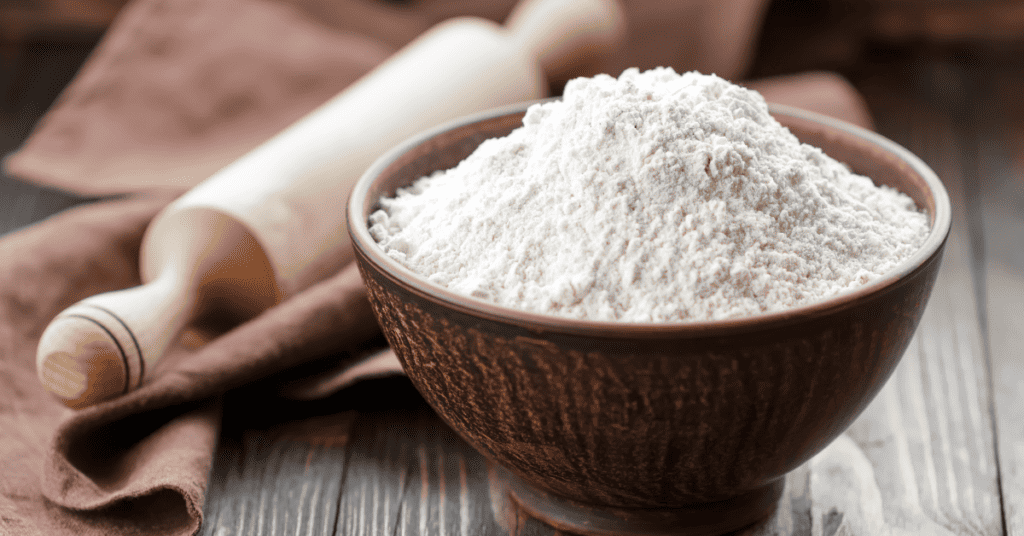
Wheat flour is another excellent substitute for cornstarch. It is denser and heavier than all-purpose flour and has a high gluten content.
Wheat flour is perfect for thickening gravies, soups, and sauces. You can also use 2 tablespoons of wheat flour to replace 1 tablespoon of cornstarch.
Rice Flour
Rice flour is a gluten-free flour that makes an excellent substitute for cornstarch. It is made from finely ground rice and has a smooth texture.
Rice flour creates a translucent and glossy texture that is perfect for thickening sauces and gravies. It is also an excellent cornstarch replacement for frying.
You can use two tablespoons of rice flour for every one tablespoon of cornstarch called for in a recipe.
Potato Starch
Potato starch is a fine white powder that is extracted from the potato tuber. It has a neutral flavor and is a great substitute for cornstarch when you need to thicken soups, stews, and sauces. Additionally, potato starch can be used in gluten-free baking recipes as it helps to bind the ingredients together.
If your recipe calls for 1 tablespoon of cornstarch, swap that out for 1 tablespoon of potato starch.
Potato flour
Potato flour is a versatile ingredient that can be used as a substitute for cornstarch in various recipes. Whether you have run out of cornstarch or simply prefer a different alternative, potato flour can provide similar thickening properties.
A general rule of thumb is to use half the amount of potato flour compared to cornstarch. For example, if a recipe calls for 1 tablespoon of cornstarch, you would use ½ tablespoon of potato flour as a substitute.
Arrowroot Powder
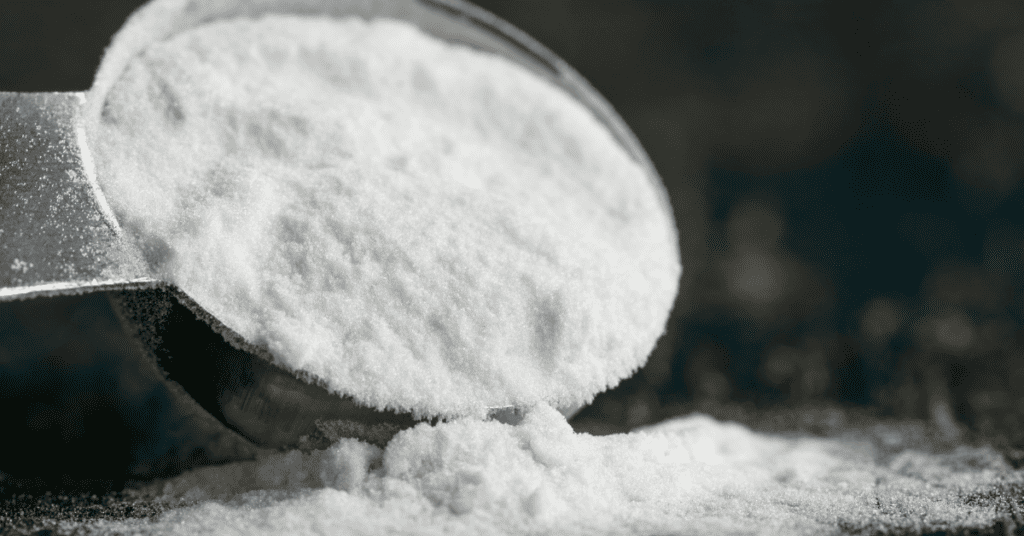
Arrowroot powder can also be used as a replacement for cornstarch in a pinch.
Arrowroot powder, on the other hand, is a lighter thickener than cornstarch, so you may need to use a slightly larger quantity to achieve the same result.
Also, arrowroot powder has a neutral flavor and is less likely to cause clumping than cornstarch.
If a recipe calls for cornstarch, you should substitute twice as much arrowroot as you would cornstarch. That is, if a recipe needs 1 tablespoon of cornstarch, replace it with 2 tablespoons of arrowroot powder.
Tapioca Starch
Tapioca starch is an excellent cornstarch alternative that provides a smooth texture and thickens well. Tapioca starch is derived from the cassava plant and is a fine, white powder that is often used as a thickener in recipes. It also has a neutral flavor, which makes it a great choice for dishes where you do not want an additional flavor profile.
You can replace 1 tablespoon of cornstarch with 2 tablespoons of tapioca starch in a recipe.
Chickpea Flour
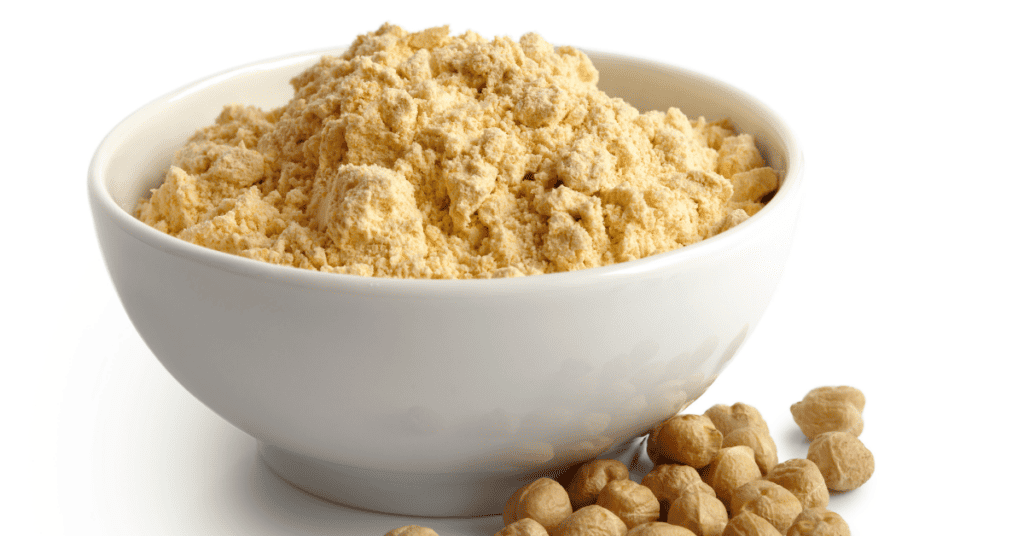
This is another ideal gluten-free and vegan substitute for cornstarch.
To use chickpea flour as a thickening agent, start by making a slurry. Mix chickpea flour with an equal amount of cold water or other liquid from your recipe to create a smooth paste. A 1:1 ratio of chickpea flour to liquid is a good starting point.
Gelatin
Gelatin is another alternative to cornstarch when it comes to creating gels and setting jellies.
Gelatin is a protein derived from collagen in animal bones. Gelatin is a powerful thickening agent that can create a smooth, creamy texture in your dishes. It is particularly useful in creating custards, puddings, and mousses.
To use gelatin as a substitute for cornstarch, simply dissolve it in liquid before adding it to your recipe. Keep in mind that gelatin has a distinct flavor that can impact the overall taste of your dish.
To replace 1 tablespoon of cornstarch, start with 1 tablespoon of gelatin.
Using Agar Agar as a Substitute for Cornstarch
Agar agar is a vegan-friendly substitute for cornstarch that can also create jellies and gels. It has a neutral flavor and sets firmer than gelatin, making it an excellent thickening agent for desserts like panna cotta.
To use agar agar as a substitute for cornstarch, dissolve it in liquid and then bring the mixture to a boil. Once it cools, it will set into a gel-like consistency.
If a recipe calls for 1 tablespoon of cornstarch, replace it with ½/ tablespoon of agar agar.
Xanthan gum
This is one of my favorite xanthan gum brands. If you make lots of keto recipes including soups, gravies, bread, pancakes, or anything else, you need to grab this!
Xanthan gum is a versatile ingredient that is commonly used as a thickening agent in the food industry.
If you find yourself without cornstarch in your pantry, some xanthan gum can easily be used as a thickener.
It is a powerful thickening agent, so a little goes a long way. Start with ¼ teaspoon and gradually increase if necessary. To prevent clumping, you should dissolve xanthan gum in a small amount of liquid before adding it to your recipe. Stir and dissolve.
It is important to note that using too much xanthan gum can result in a slimy texture, so exercise caution when measuring.
Guar gum
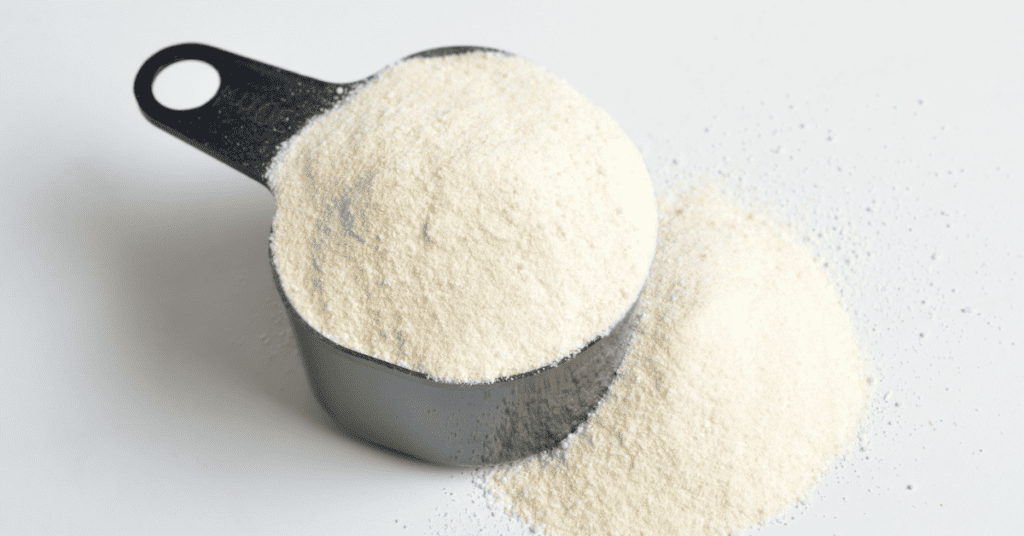
Another great alternative is guar gum, a natural gum derived from the guar plant. Guar gum provides excellent thickening and stabilizing properties that can work for ice creams, shakes, frozen desserts, and more.
If a recipe calls for 1 tablespoon of cornstarch, use ¼–½ teaspoon as a substitute.
Glucomannan (konjac)
Glucomannan is a soluble dietary fiber derived from the root of the konjac plant, native to Southeast Asia. It is often used as a dietary supplement. However, it can also be used as a replacement for cornstarch in cooking and baking.
When substituting cornstarch with glucomannan, it is important to note that glucomannan is significantly more potent than cornstarch. Therefore, it is essential to use it in smaller amounts. Here is a simple guideline for substituting cornstarch with glucomannan:
- Start by mixing a small amount of glucomannan powder with water. The ratio is usually one teaspoon of glucomannan to one cup of liquid.
- Allow the mixture to sit for a few minutes, as glucomannan absorbs water and forms a gel-like consistency.
- Use the desired amount of this gel-like mixture to replace cornstarch in your recipe. Remember to start with a smaller quantity and adjust according to the thickness you desire.
Using Vegetable Purees
To use vegetable purees as a thickening agent, simply blend your chosen vegetables until they form a smooth mixture. Common vegetables used for purees include carrots, squash, and cauliflower. Once you have your puree, add it to your recipe and continue to cook until it reaches the desired consistency.
Vegetable purees work particularly well in soups and sauces, adding both flavor and body to the dish. They are also a great way to sneak extra servings of vegetables into your meals.
Mashed Potatoes
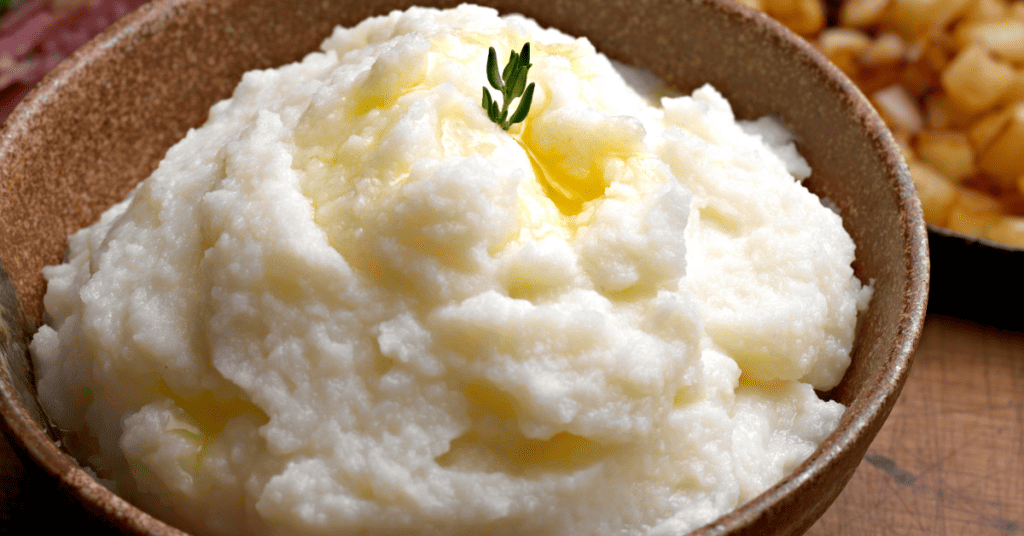
Another effective alternative to cornstarch is mashed potatoes. Simply cook and mash your potatoes as you normally would, then add them to your recipe in place of cornstarch. Mashed potatoes work particularly well in casseroles and stews, adding a hearty texture and flavor to the dish.
When using mashed potatoes as a thickening agent, be sure to adjust the seasoning of the dish accordingly. The addition of potatoes may alter the overall taste and balance of flavors.
Other Cornstarch Substitutes
Ground Flaxseed
Ground flaxseed is a nutrient-rich substitute for cornstarch that can be used in certain recipes. It provides a thickening effect while also adding a nutty flavor and fiber to the dish.
To use ground flaxseed as a thickener, mix it with water and let it sit for a few minutes to form a gel-like consistency before adding it to the recipe.
Psyllium Husk Powder
Psyllium husk powder is derived from the seeds of the Plantago ovata plant, often referred to as simply psyllium.
When substituting cornstarch with psyllium husk powder, it’s essential to keep a few key considerations in mind. Psyllium husk powder has a strong binding capacity, making it an excellent thickener for sauces, soups, and gravies. However, it does have a slightly different texture when compared to cornstarch, so adjustments may be necessary for certain recipes.
As a general rule of thumb, use approximately half the amount of psyllium husk powder as the recommended amount of cornstarch.
Pectin
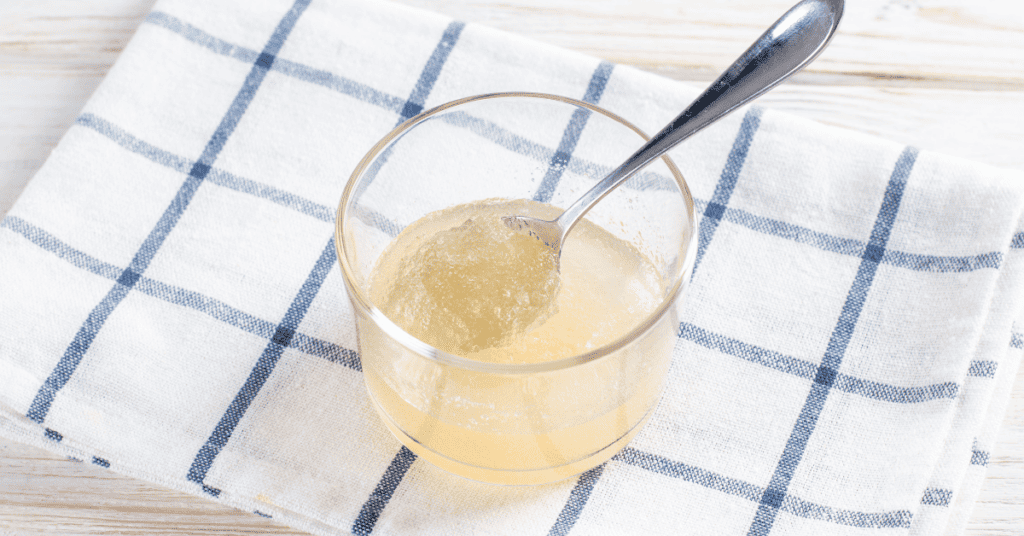
Pectin can be used as a cornstarch alternative in certain recipes, especially when you want to thicken fruit-based sauces, jams, jellies, or desserts. Pectin is a natural thickening agent commonly used in canning and preserving fruit products. It will not work as a general-purpose thickener in savory dishes because its thickening properties are primarily effective in acidic and sugar-rich environments.
Instant ClearJel
Yes, you can use Instant ClearJel as a substitute for cornstarch in many recipes. Instant ClearJel is a modified food starch that is specifically designed for thickening and is often used in pie fillings, sauces, and gravies. It has several advantages, such as maintaining a clear, glossy appearance and not breaking down when exposed to high temperatures. It’s a reliable alternative to cornstarch in various applications.
Here’s how to use Instant ClearJel as a substitute for cornstarch:
- Measuring: Instant ClearJel can be used in a 1:1 ratio as a direct replacement for cornstarch. If your recipe calls for a certain amount of cornstarch, you can use the same amount of Instant ClearJel.
- Cold Liquid Mixing: Unlike cornstarch, which typically requires mixing with water to form a slurry, Instant ClearJel can be mixed directly with your dry ingredients or cold liquids without clumping.
Kuzu Root Starch
Often used in Japanese cooking, Kudzu is a starchy powder like arrowroot or cornstarch that is used to thicken gravies, sauces, and stews.
You can typically substitute Kuzu root starch for cornstarch in a 1:1 ratio. If your recipe calls for a certain amount of cornstarch, use the same amount of Kuzu root starch.
Coconut Flour
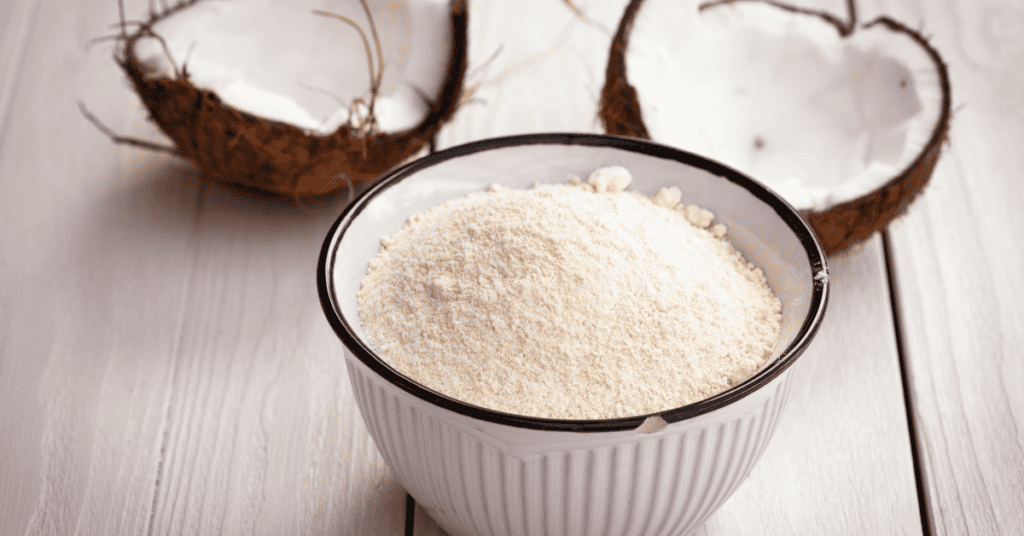
It works as a thickening agent in certain dishes, especially those with a coconut flavor profile. It’s also a great thickener for keto dieters.
Overall, there are many other cornstarch substitutes available, each with unique properties and benefits. By exploring these alternatives, you can find the perfect substitute for cornstarch or just about any recipe!
